One of the main motivations for me starting the London Wlogger was to share lesser-known areas and places in London, or as I like to call them, ‘hidden gems’. These could be anything from cute greens, wonderful woodlands, picturesque parks or quaint gardens. Even though my blog has covered many touristy and famous places, the main essence of it and reason I enjoy doing it is to provide details on those walks you wouldn’t normally do.
So I’m going to share some of the hidden gems which I’ve discovered on my walks to inspire avid walkers or London enthusiasts to explore areas outside those that we would normally visit. You won’t find the following 15 places in any London tourist guides, and because they’re hidden places, that makes them more special to me.
Barnes Green
My walk back in 2018 began at Putney Bridge and ended in the delightful surroundings of Barnes Green, located just outside Barnes Common. The attractive little green has such a village feel about it with its lovely river when you enter it, right through to the pretty pond that’s the focal point of the area.
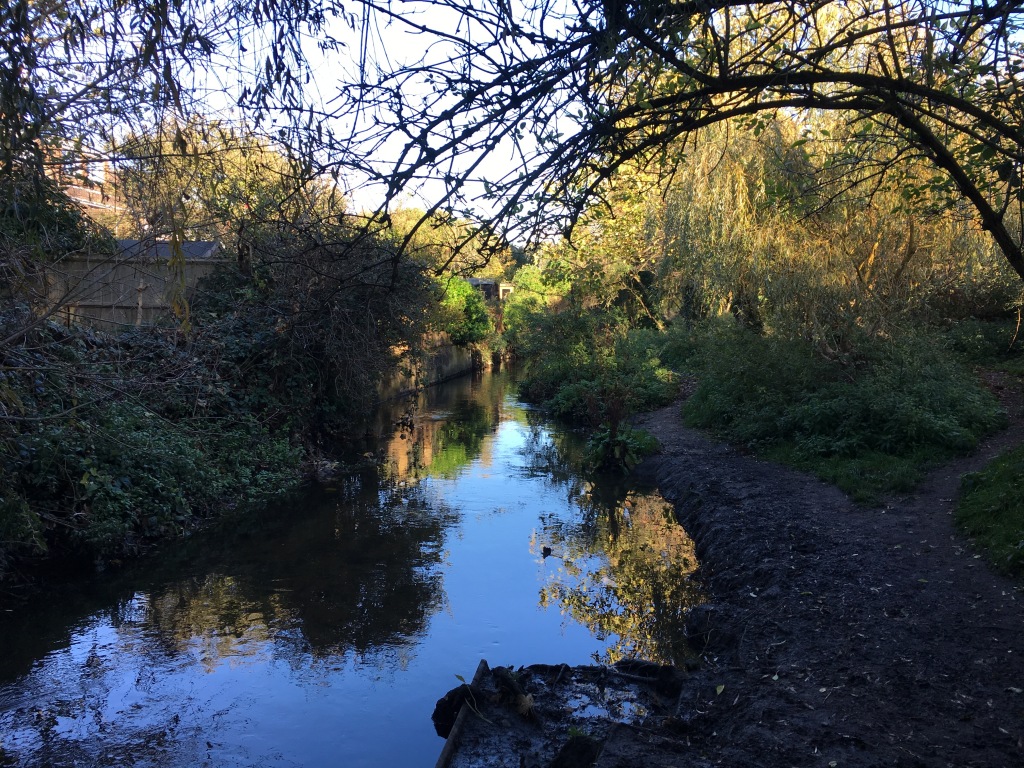

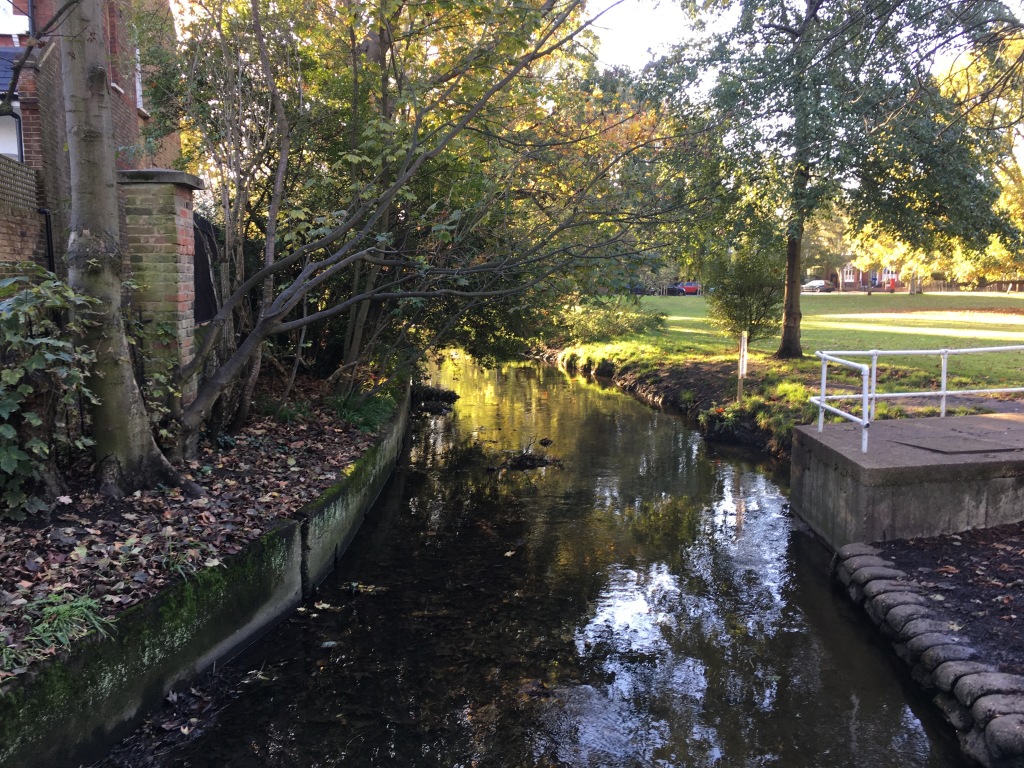

It really is the epitome of what a village green would look like and it’s further enhanced by the fact it’s in such a salubrious and well-heeled area. I couldn’t have asked to finish my walk around Putney, Chiswick, Hammersmith and Barnes in a more charming place.
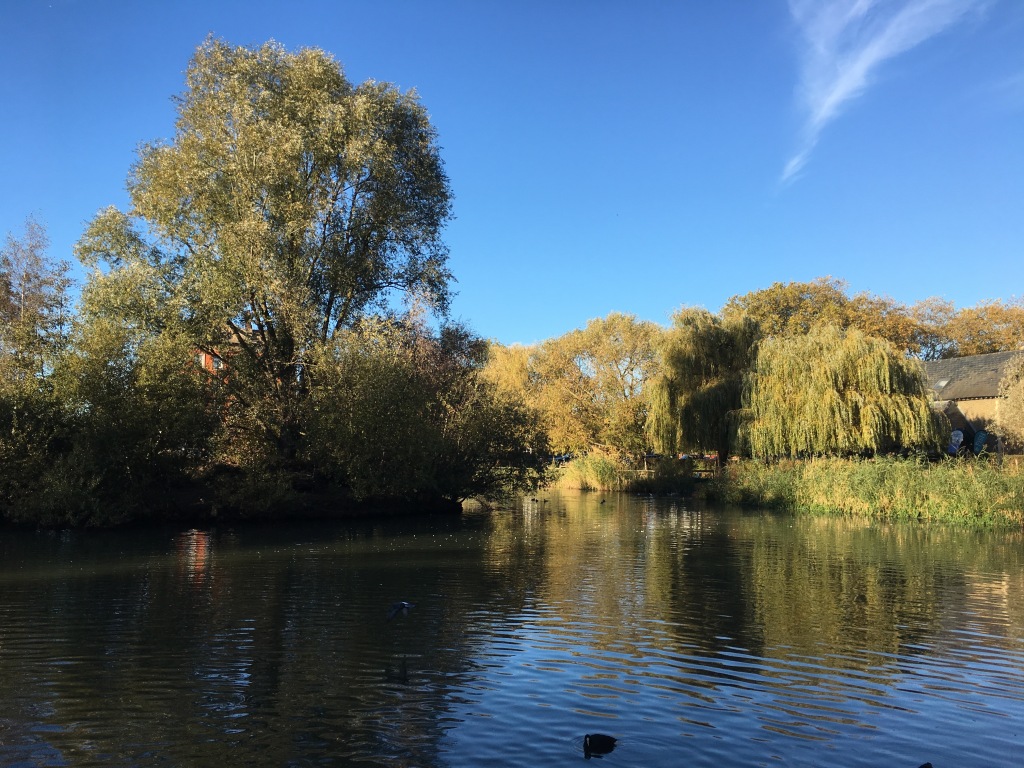



Trent Country Park
Earlier this year I discovered an area that I’d never been to before and actually haven’t been to since, and that was Trent Country Park. My walk took me from Arnos Park to Trent Country Park where I explored the North London Borough of Enfield and destinations including Southgate and Cockfosters. However, it was Trent Country Park that stood out for me and has remained memorable ever since.
With over 400 acres (161 hectares) of stunning woodland, rolling meadows, enchanting views and sublime scenery, Trent Country Park is an unbelievable place to visit.
Trent Park dates back to the 14th century when it was part of Enfield Chase, one of Henry IV’s hunting grounds. In 1777, George III leased the site to Sir Richard Jebb, who was a doctor that had saved the life of the King’s younger brother, the then Duke of Gloucester. Jebb derived the name ‘Trent’ because it was in Trent, Italy, that the King’s brother had been saved. Subsequently, Jebb acquired the freehold in the house and on this death it was sold to Lord Cholmondeley.
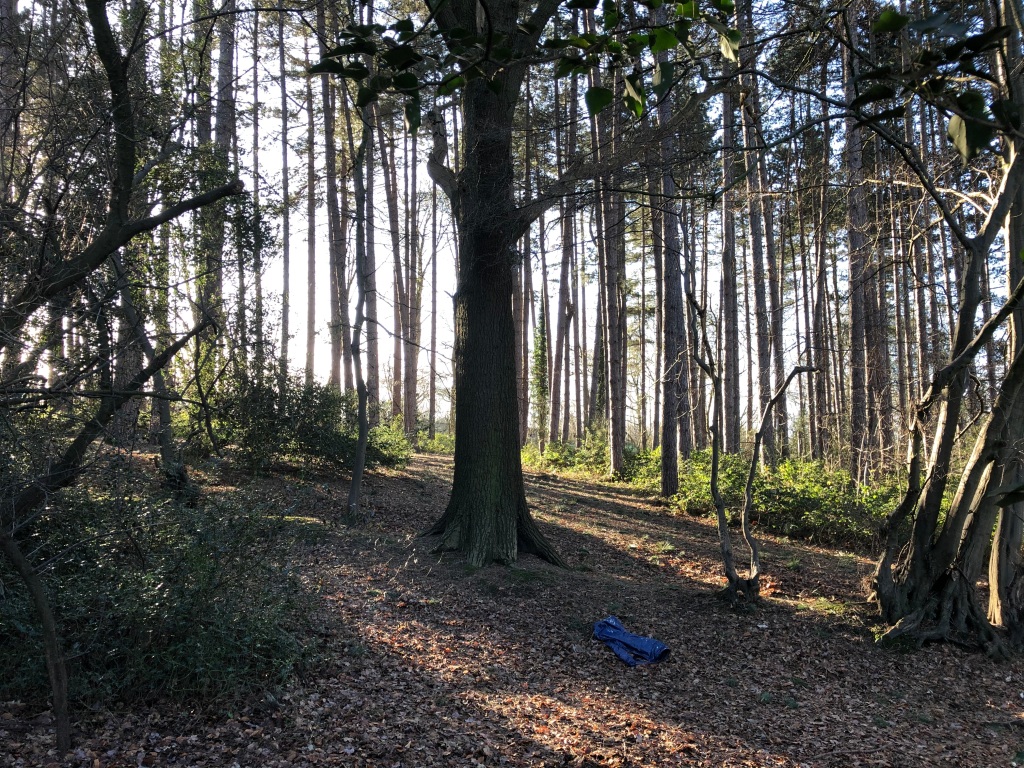




In 1836, David Bevan, a banker, bought the house for his son Robert Cooper Lee Bevan. In 1909, the estate was sold to Sir Edward Sassoon, father of Phillip Sassoon (cousin of the poet Siegfried Sassoon). Sir Philip Sassoon inherited the estate in 1912 upon his father’s death and went on to entertain many notable guests at Trent Park, including Charlie Chaplin and Winston Churchill. Sir Philip Sassoon died in 1939 and the house was requisitioned by the government for use during the Second World War.




In 1947, the estate became a Ministry of Education emergency training college, until the area was purchased by Middlesex County Council as greenbelt land. In 1965, the Greater London Council took over the administration of the park until the London Borough of Enfield opened it to the public in 1973.


When you walk out the woodland you get to enjoy more awe-inspiring views, which highlight the incredible vastness of the country park and the feeling you’re in the middle of somewhere outside of London.
Seeing all this beautiful countryside always brings a real smile to my face and makes me so glad that I love walking and running this blog, as I wouldn’t find these places if I didn’t, given that I’d not normally be in areas such as Trent Country Park!



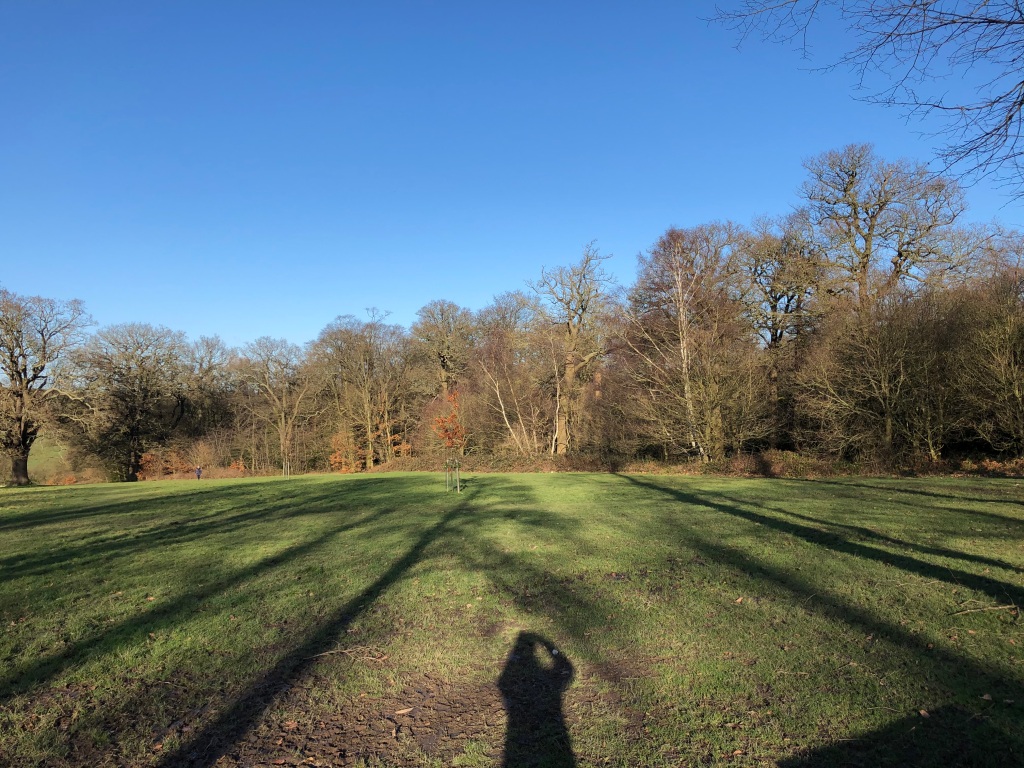


Fryent Country Park
There isn’t just Trent Country Park, but another country park I had the pleasure of visiting was Fryent Country Park back in 2019 when I walked from Gladstone Park and concluded at it. Located a stone’s throw away from Wembley Stadium in North London, it’s one of the most unexpected sights I’ve walked to.
Fryent Country Park is 254 acres (103 hectares) of beautiful fields and woodland located in the London Borough of Brent. The wood comprises of French oak, hornbeam, elm, ash and fruit trees, and is considered as one of the surviving examples of the Middlesex countryside.
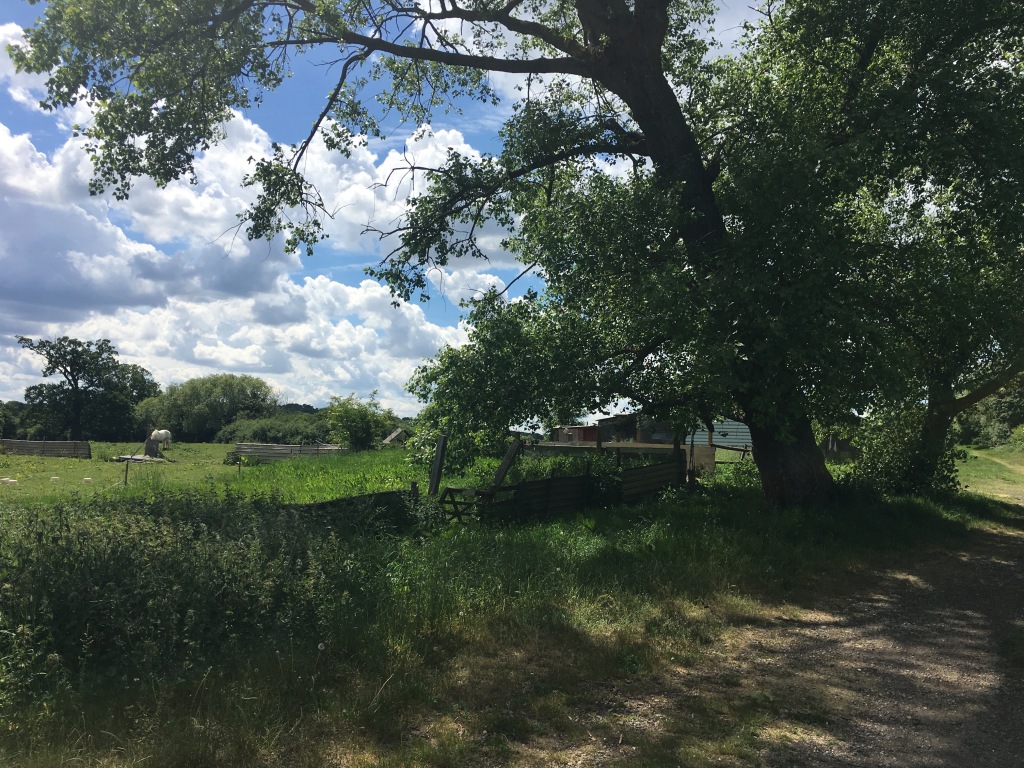




Like with Trent Country Park, this was the first time that I’d explored Fryent Country Park and you’re blown away by the vast nature of the area and it does feel as if you’re taking a long hike in somewhere like the Yorkshire Dales. Being quite high up ensures that you get a spectacular view across North London and with Wembley Stadium in the distance, it once again gives me that feeling that I can’t believe I’m in London!
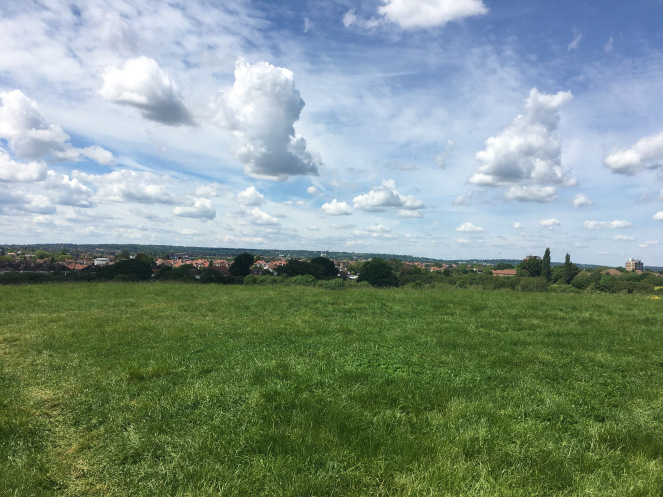
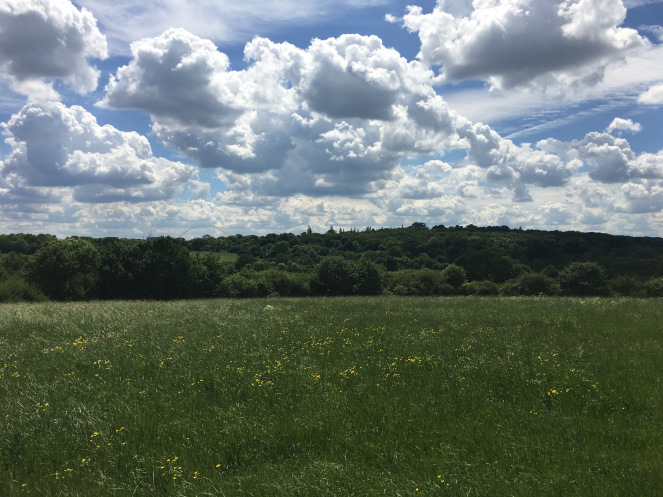



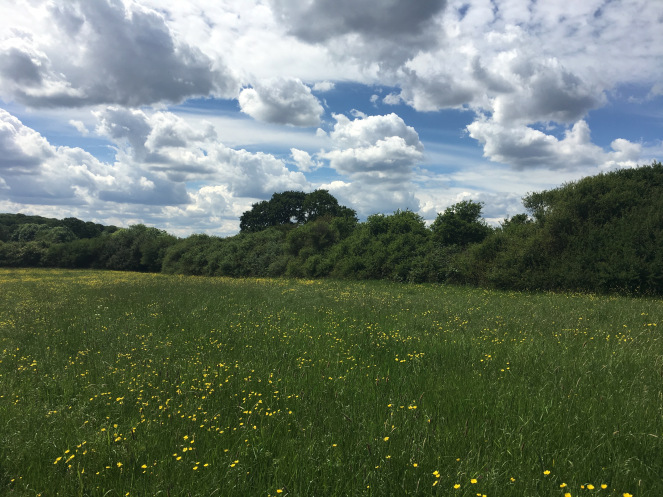

Russia Dock Woodland
To this day the next two hidden gems – Russian Dock Woodland and Stave Hill – have been the biggest surprises for me on my walks. Back in 2018 my walk from Tower Bridge to Stave Hill went through Canada Water and the Greenland Dock. This walk gave me the enjoyment of firstly going through Russia Dock Woodland in Rotherhithe.
The Russia Dock was one of the former Surrey Commercial Docks which also included the Island Dock and Surrey Basin. The docks were used to import timber from Norway, Sweden and Russia with it being mostly soft wood known as ‘deal wood’, which was used for newsprint and manufacturing furniture.


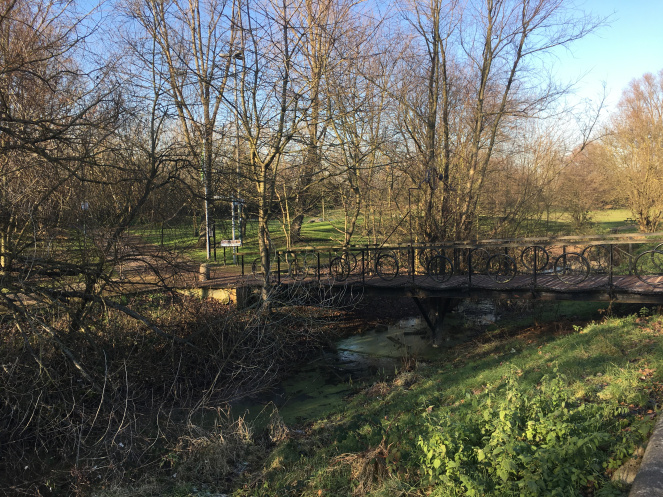
Following the closure of the docks in the early 1970s the area was developed by the London Docklands Development Corporation (LDDC) and in 1980 was turned into a 34.5 acre (13.9 hectares) woodland. The woodland still contains some of the old features of the docks such as wall capstones, gauges, bollards, mooring chains and tracks. Now the area is maintained and owned by Southwark Council.
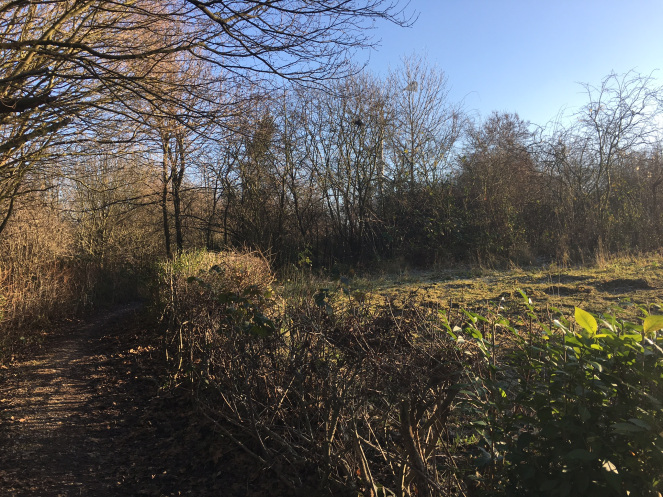
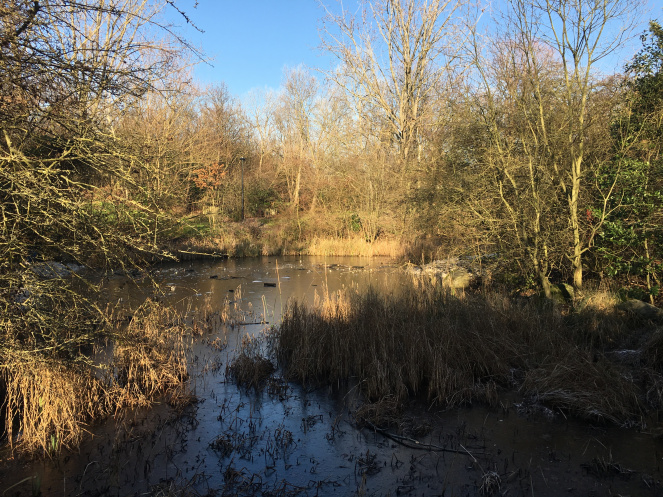
With Canary Wharf right beside the woodland, it’s your little slice of splendour which gets you away from the hustle and bustle of city life, but still keeps you close enough to give you a view of financial district. From pathways and ponds to plants and picturesque treasures, you feel very removed from London. Also I do love the dock history associated with the area, something you’re always reminded of when you walk along the old riverside.


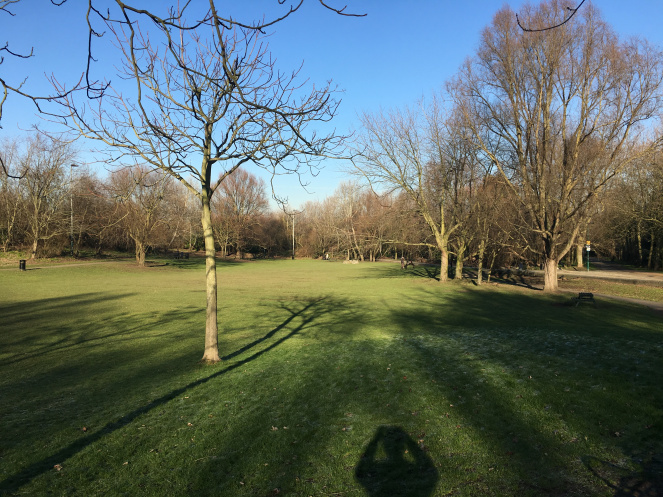

Stave Hill
After leaving Russia Dock Woodland you get to one of my favourite views in London and somewhere that I still think isn’t that well-known. Normally if you want to get a panoramic view of the city you’d perhaps go to Parliament Hill in Hampstead Heath, but Stave Hill gives you that and much more.
Stave Hill was created in 1985 by the London Docklands Development Corporation, and is a 40 foot (9.1m) artificial grass hill. I do love its stairway which is so inviting you simply have to walk up it. The reward for going up those steps is a ‘spot the landmark’ competition. On one side you can see everything from The Shard and The Gherkin to Tower Bridge and The Cheese Grater. While the view opposite is Canary Wharf and its high skyscrapers.
It’s a truly special view that’s awe-inspiring and breathtaking. As you’re quite high up, the sound of the wind gently whistling by your ears is both peaceful and calming. The view must be good as it’s the image I’ve used on my website header…!
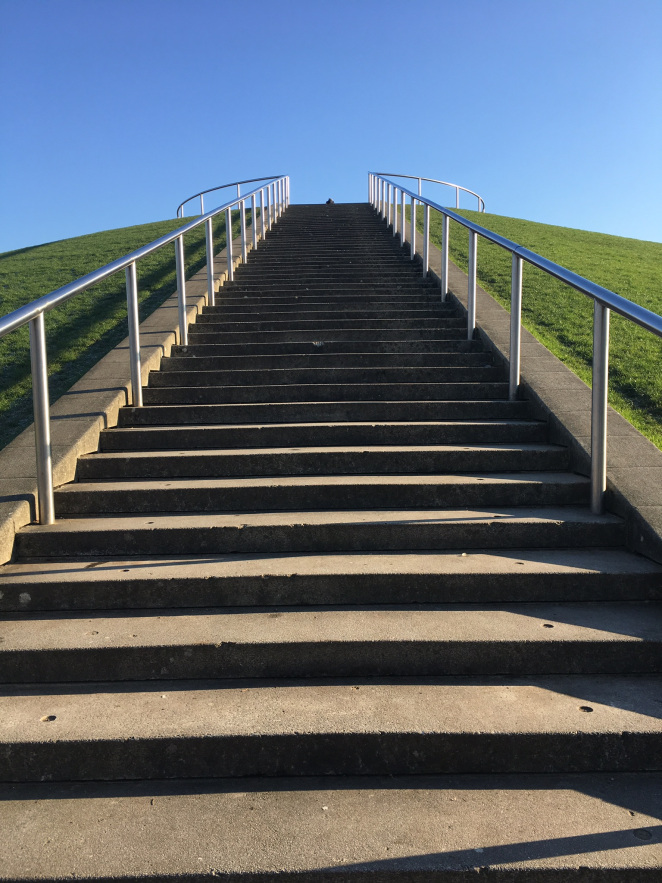



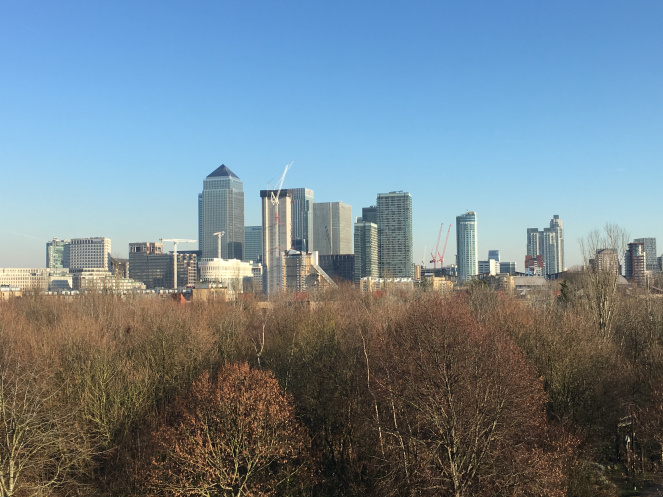
On the hill sits a cast bronze map of the former docks, designed by Michael Rizzello – a little nice touch you get for being up on the hill.
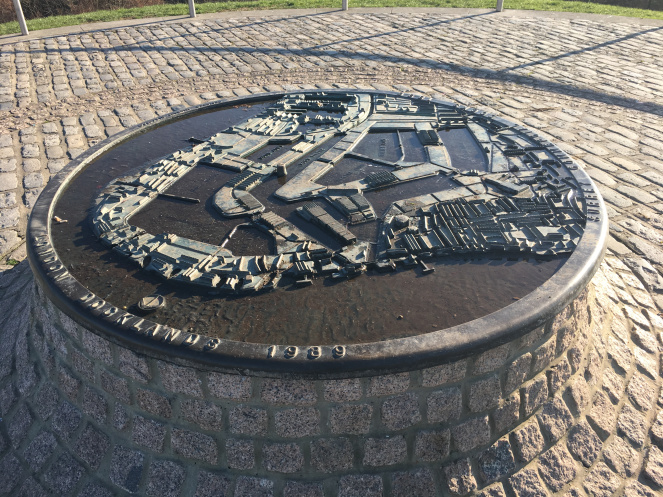
Mudchute Park & Farm
Back in the winter of 2020 my walk from Blackheath to Mudchute Park & Farm provided me with a first on my blog and that was visiting a farm!
Located in the middle of the Isle of Dogs, Mudchute Park & Farm is 32 acres (13 hectares) of countryside and is one of the largest urban farms in Europe. Once derelict land, the name “Mudchute” derives from it being the former dumping ground for mud dredged from the Millwall Docks, which had to be regularly dredged to prevent silting up.

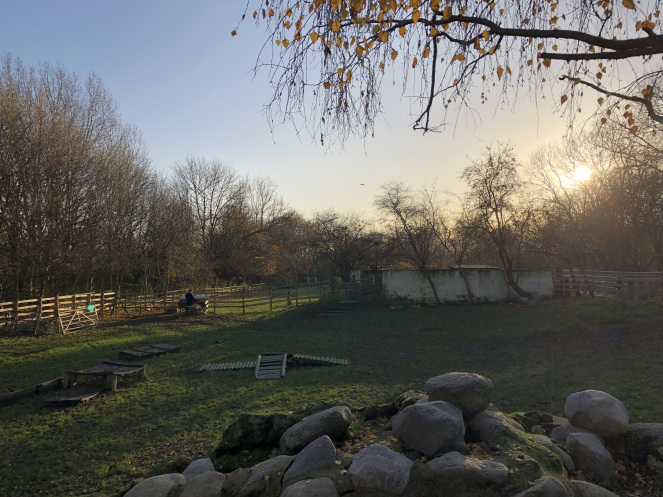

In 1974 the land was earmarked for the construction of a high rise estate, although, local opposition for The Mudchute meant this didn’t materialise and it was secured as the ‘People’s Park’. The Mudchute Association was set up in 1977 to preserve and develop the area, which saw farm animals and horses introduced and trees and plants laid out by volunteers. Since then local schools have benefited from studying the natural world and it has gained a reputation for providing educational and leisure activities from across London.



Open every day and free to enter, the farm has a wide range of animals from ducks, cows and sheep to donkeys, llamas and goats as well as stables and a cafe and shop. The farm relies mainly on volunteering, which gives it a real community feel.


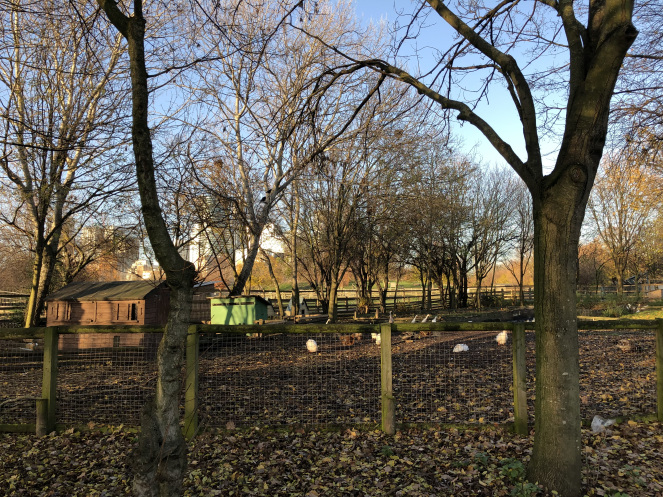


If there ever was a juxtaposition between two elements it might just be located here! You have a farm and countryside scenery with the view of Canary Wharf in the background – you couldn’t get more of a contrast. One minute you could be looking at a horse grazing in a field and the next you get a glimpse of a high-rise building owned by a bank.
It’s marvellous that even in London where it always feels like you’re condensed and amongst a busy metropolis, that there’s room for animals to thrive and live in a farm.






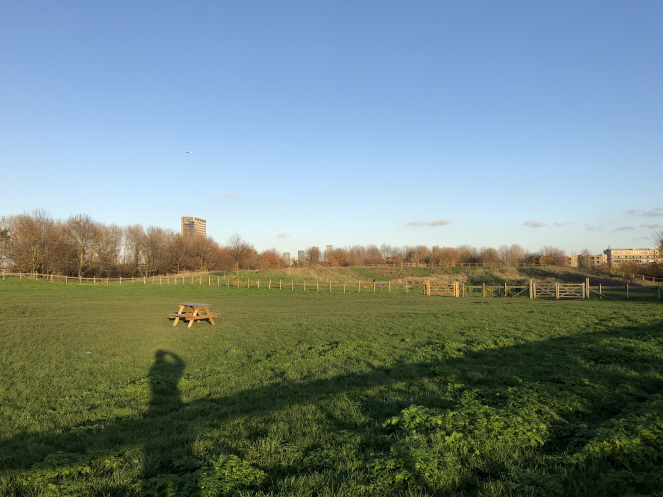

Italian Gardens
One of my earliest walks and hidden gem discoveries was when I walked from Hyde Park Corner to Italian Gardens back in 2017. The glorious Italian Gardens is located north of Kensington Gardens, near Lancaster Gate, which might make it not feel like an unknown area, but generally many of us walking around Hyde Park or Kensington Gardens rarely venture down to it.

This Grade II listed water garden is over 150 years old and features four main basins and five urns which have designs of a Swan’s breast, woman’s head, ram’s head, dolphin, and oval. Also there is a spectacular white marble Tazza Fountain.
The gardens were designed by James Pennethorne, and built in 1860. The inspiration for them came from a similar layout in Osborne House on The Isle of Wight where Prince Regent and the Royal Family would spend their holidays.


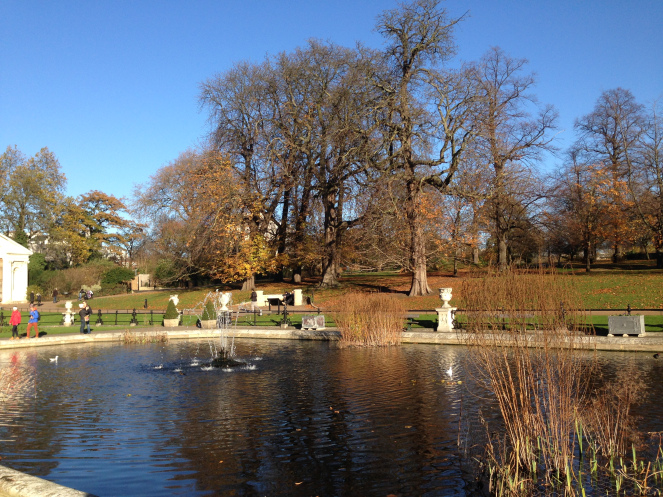
To ensure Italian Gardens kept its wonderful beauty, two notable recent renovations have been undertaken on it, in 1991 and 2011 respectively. In 1991 the vases were re-carved, whilst in 2011 repairs were done including clearing silt from the fountain basins and removing the algae from the Portland stone and marble.


Walking around Italian Gardens was one of the first times that I thought how special London is and just what a joy it is to explore places like this that have such natural beauty and elegance. You could sit in it for hours and watch the people walk by or listen to the sound of water trickling from the fountains. If you were ever going to meditate and be at one with yourself, this is an ideal place.


Shepherd Market
A hidden gem that I have visited both before writing about it on my blog and to this day keep visiting, is Shepherd Market, which is located a few minutes from Green Park tucked away in Mayfair. I discovered this charming small square and piazza on one of my first walks back in 2016 when I went from Marble Arch to Mayfair.

Mayfair itself is named after the infamous 15 day fair established by James II in the 1680s which took place in Shepherd Market. Developed between 1735 and 1746 by local architect Edward Shepherd, the market featured path alleys, a duck pond, a two-storey market and theatre. During the 1920s it was an ultrafashionable address for some of London’s most refined inhabitants and is described as ‘The Heart of Mayfair’.
The area has everything from pubs and restaurants to stationery and barbers. The Ye Grapes pub and Da Corradi Italian restaurant in the square are my favourite places to drink and eat in London. Of course I should mention that I’m not getting paid to mention either of them in my blog… but if they want to offer me a free meal or drinks I’d be happy to accept!
What I love most about Shepherd Market is that it’s so hidden away, just a few minutes walk outside of it you get to the packed Green Park Station and vibrant Green Park itself, but little do many know that this cute square is located right near them.
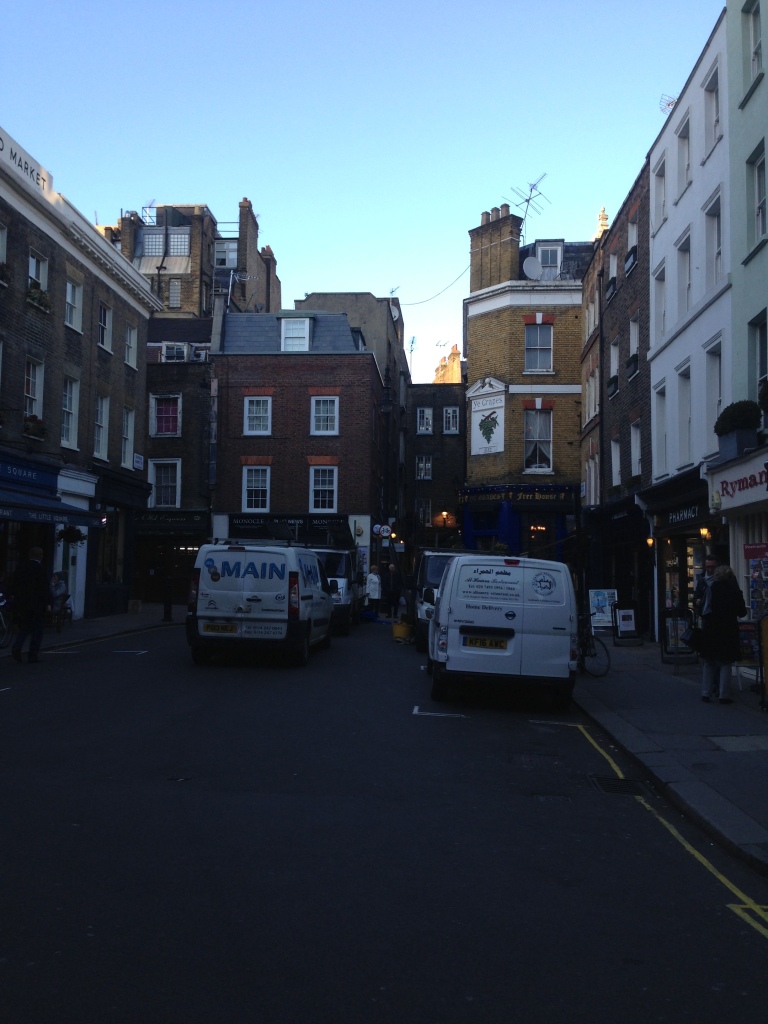
Highgate Wood
I’ve always loved exploring Hampstead, but I’d never really walked around Highgate which is right next to it. Back in 2018 my walk from Highgate to Finsbury Park took in the magnificent Highgate Wood, which is in between East Finchley, Highgate Village and Muswell Hill – and is a 70 acre (28 hectare) ancient woodland.

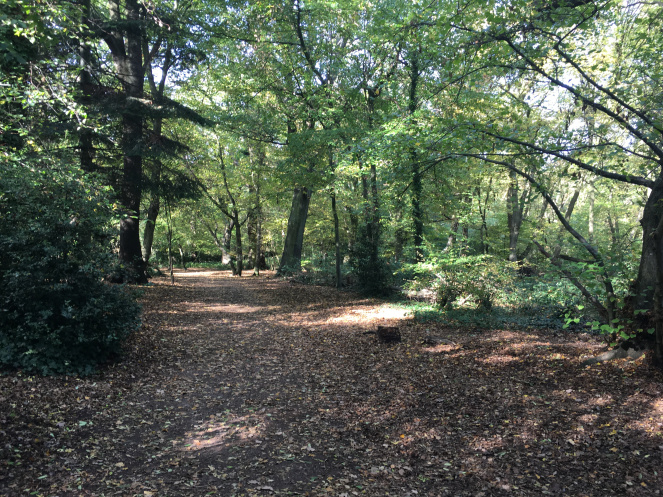

Highgate Wood appears within the Ordnance Survey map of Middlesex in 1886 which illustrates the area’s illustrious history. Predominately an oak, hornbeam and holly wood, there are more than 50 tree and shrub species within the woodlands. The wood is also home to the rare deciduous tree with brown berries, known as The Wild Service Tree or the Sorbus torminalis.
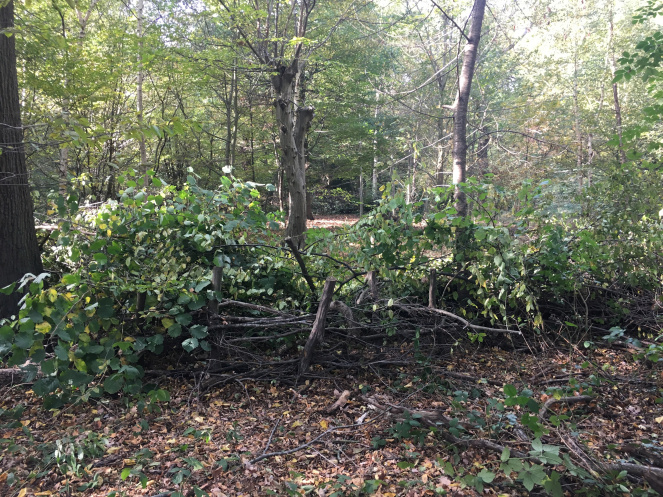
The woods aren’t just home to trees and plants, but 71 different species of bird have been recorded there, as well as foxes, grey squirrels, seven species of bats, 180 species of moth, 12 species of butterfly and 80 species of spider!


The woodland is listed as one of only eight Green Heritage Sites in London and is a Site of Metropolitan Importance for Nature Conversation. The woodland is currently a registered charity managed and funded by the City of London.
When you walk around Highgate Wood it’s so magical and feels like a storybook. Every corner introduces you to cute treasures, picturesque scenery and breathtaking views as far as the eye can see. There aren’t too many woodlands in London, so it’s always extra special when you explore them and it’s the ideal way to escape the crowds.


Lesnes Abbey Woods
One of the other woodlands I’ve enjoyed exploring came in 2019 when I walked from Lesnes Abbey Woods to The Thames Barrier. Based in the London Borough of Bexley, the wood’s date back to the Bronze Age and are full of wild bluebells and daffodils in the Spring, but all year round there’s a variety of beautiful trees, shrubs, plants and bushes spread around a vast area of woodland.
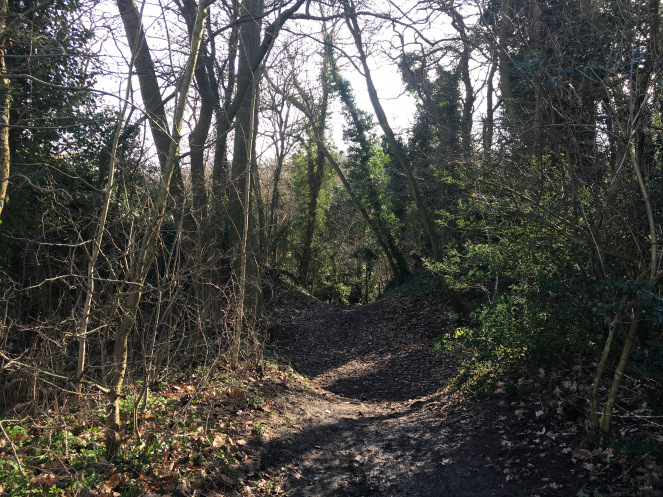



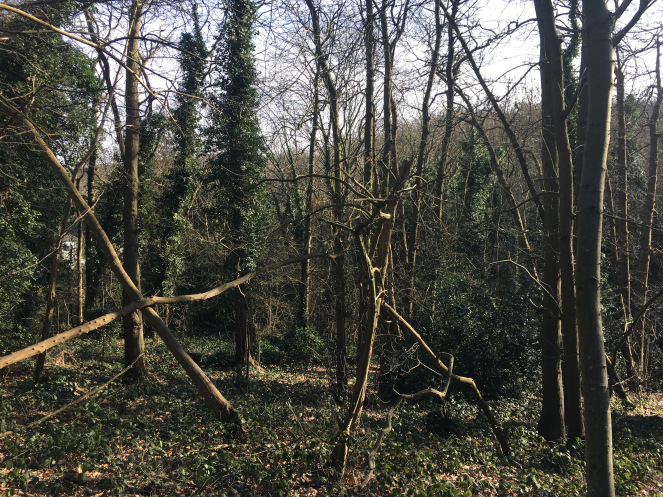
In order to persevere its natural beauty, a local community group called the Lesnes Abbey Conservation Volunteers runs practical conservation events to help manage the woodland. The group was started in 1994 and is a registered environmental conservation charity run by the local people, and works closely with Bexley Council.

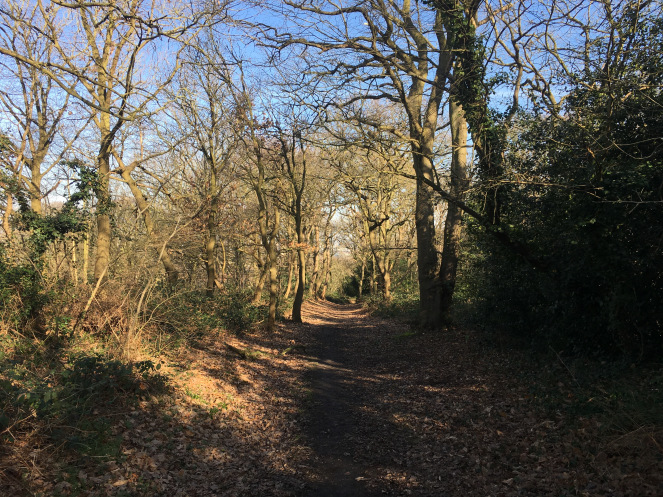


Like with Russia Dock Woodland and Highgate Wood, there’s such tranquility when you walk around Lesnes Abbey Woods and every time you’re taken back by just how beautiful it is. You can’t help but fall in love with the woodlands and if you enjoy hiking or walking, you’re in for a treat.
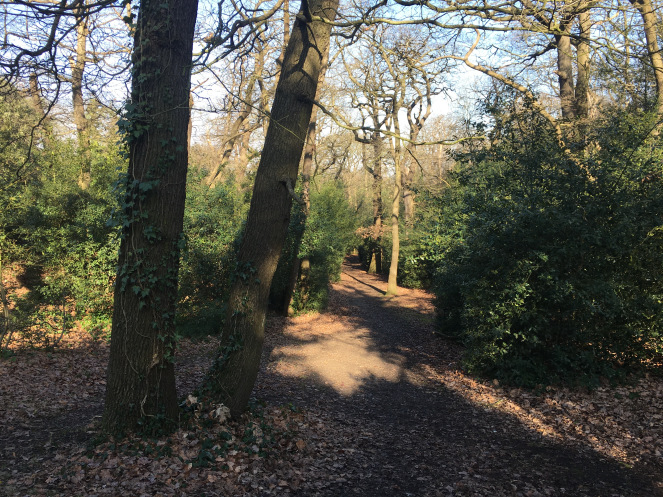



When you walk down the path from the woodland you see quite a few old stones and walls, but as you look more closely it’s the ruins of an old structure.
This piece of architectural brilliance is the remains of the old Lesnes Abbey, which is where the woodlands name derives from. After the Norman Conquest of 1066, the estate of Lesnes was owned by Bishop Odo, the half-brother of William the Conqueror and who was one of the most powerful men in Norman England.
Lesnes Abbey was built by Richard de Luci in 1178. De Luci was the Chief Justiciar of England under Henry II, and it’s rumoured that he founded the abbey in repentance for his role in the murder of Thomas Becket. By 1525 it would become dissolved by cardinal Wolsey, which was partly due to the wider dissolution of monasteries in England. After this the monastic buildings were all pulled down, except for the lodging area.
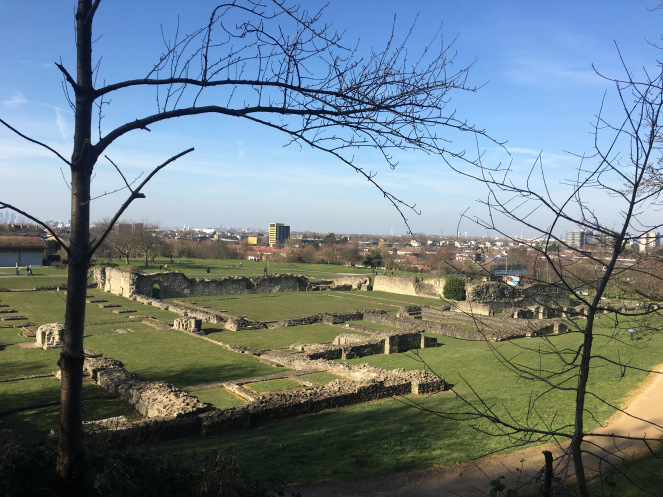


In 1930 the London County Council bought the site and opened it to the public as a park. In 1986 control passed to the London Borough of Bexley. Today only the foundations of the ancient monument remain and they give you a real sense of what the abbey must’ve looked like. The walls stand at 2.5m (9ft) high and were built from a mix of flint, chalk and Kentish ragstone. The western part of the old abbey includes the foundations of a brewhouse, kitchen and cellarer’s store. The eastern part of the ruins includes a sacristy, parlour, chapter house, porter undercroft and warming house.
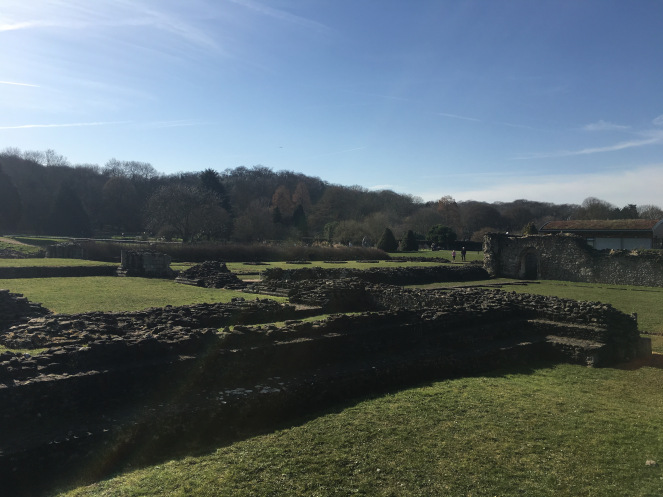

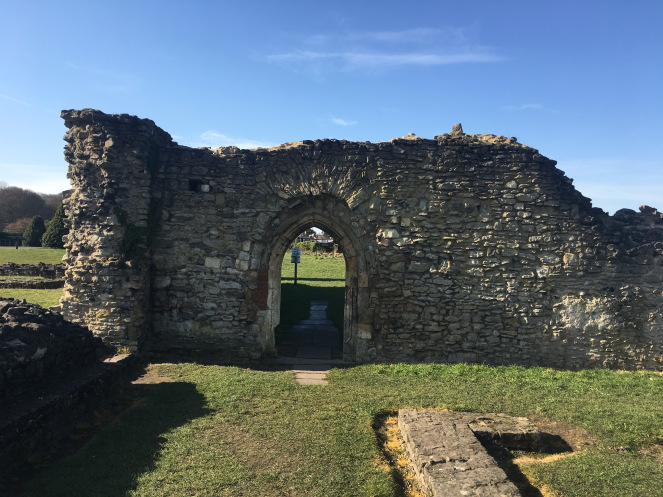

The Rookery
I’ve done many walks around South London whether that’s Wandsworth or Clapham, but when I explored Norbury Park to Tooting Commons in 2019 I passed through Streatham Common and a delightful surprise within it known as The Rookery. This was formerly part of the grounds of the large manor that housed visitors to one of Streatham’s historic mineral wells. In the 18th Century crowds would visit Streatham to take the waters, as they were believed to have healing powers. The Rookery’s name derives from the large house that stood close to the wells.
The house was demolished after the surrounding grounds were purchased by the London County Council, which resulted in it being landscaped with the gardens created – eventually being opened to the public in 1913. The area is now managed by the Streatham Common Community Garden which encourages community food growing as one of its many initiatives.





Whilst walking through the area it’s so tranquil, and reminds me so much of Holland Park, which has a similar garden in it. You can also immediately tell that a grand estate was on this site and that there were a large area of grounds. One thing I’ve noticed on all my walks, is that even though London has parks, woods, rivers, green spaces and natural beauty, there aren’t too many gardens like this, which does surprise me, given the history of the capital having many estates and Royal status. One thing I need to try and do is track down more of these secret gardens as they’re so pretty!
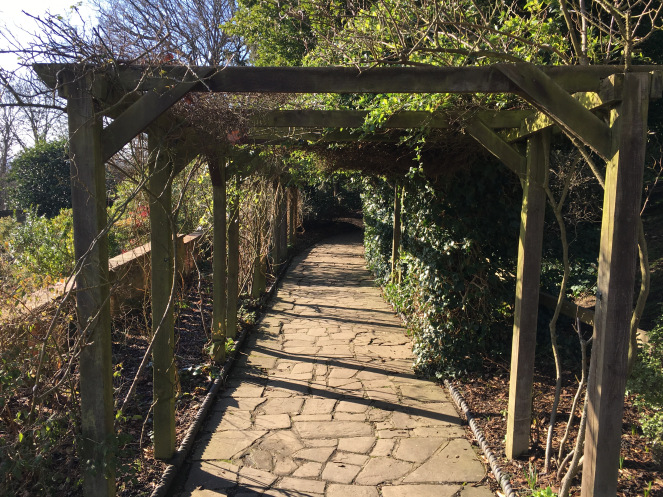



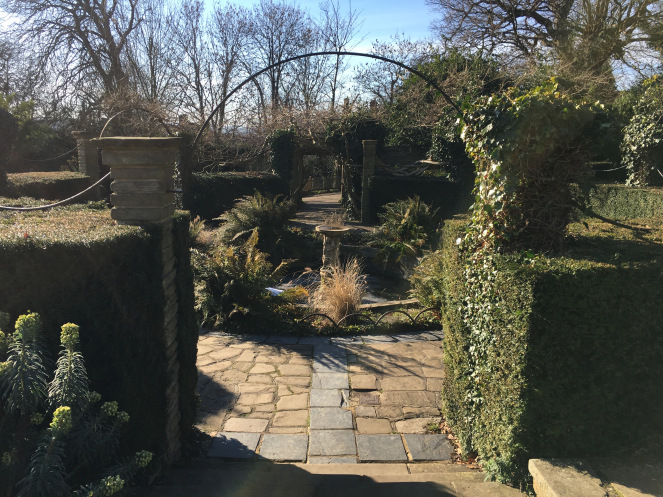
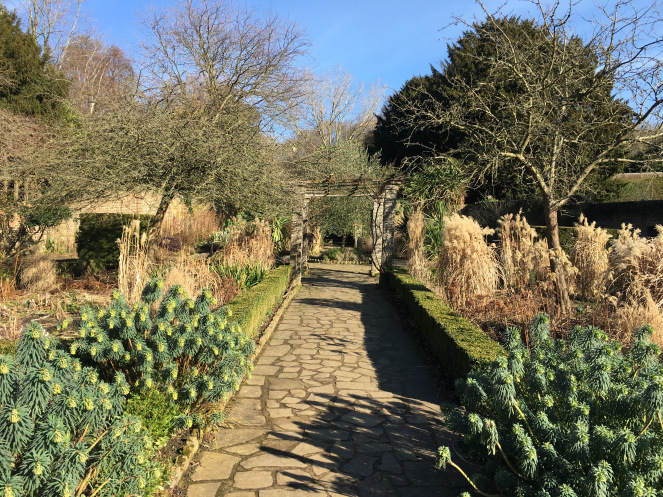


Cadogan Place Gardens
When you walk around Knightsbridge you pass many shops that sell luxury brands, but for me, the biggest luxury in the area is the glamorous Cadogan Place Gardens, which I discovered back in 2017 on my walk from Grosvenor Gardens to Knightsbridge.
Once known as the London Botanic Gardens, they were laid out at the end of the 18th century by William Salisbury. Within the gardens sits lawns, plants, hedges and sculptures, everything you’d expect from a beautiful garden.
The gardens do have that affluent and wealthy appearance about them, as they look very well maintained without a leaf or blade of grass out of place. The charm and elegance of them is what you’d expect in an area like Knightsbridge.

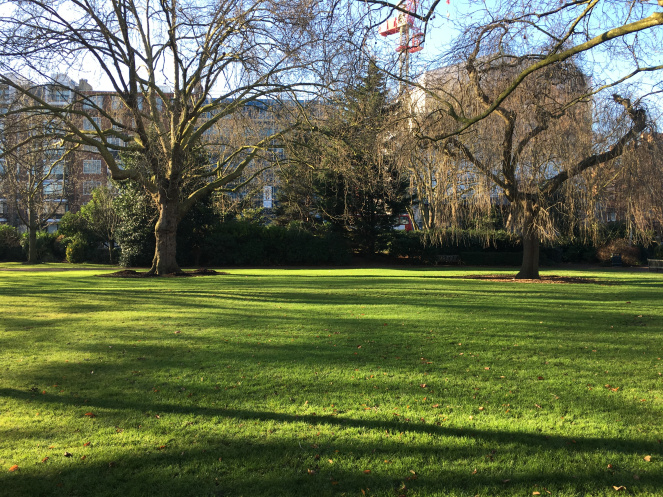
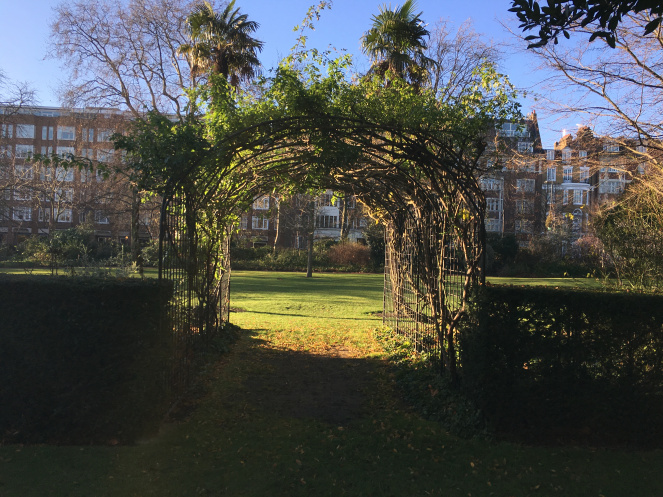
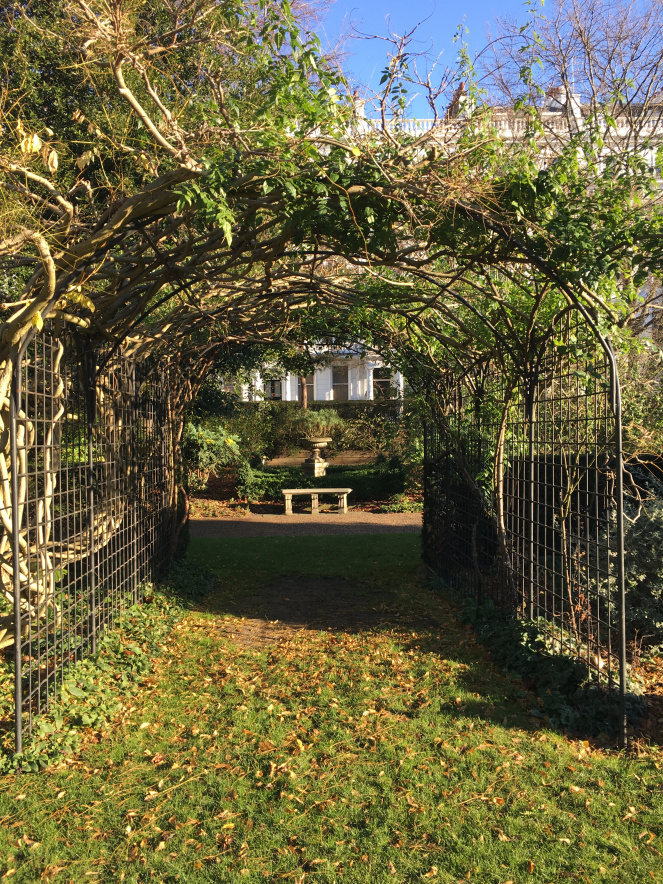
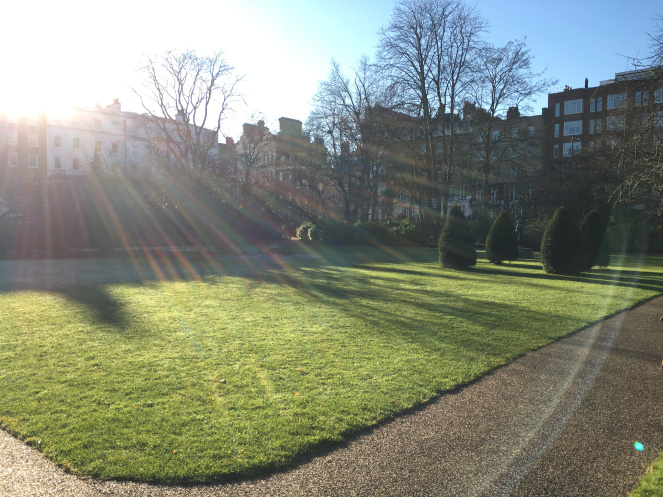

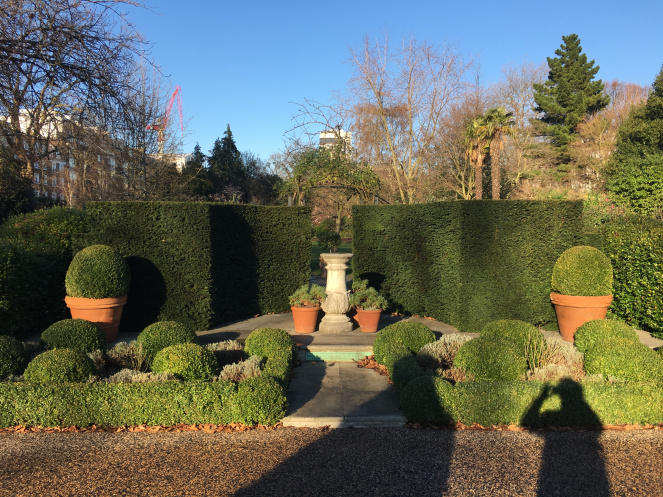
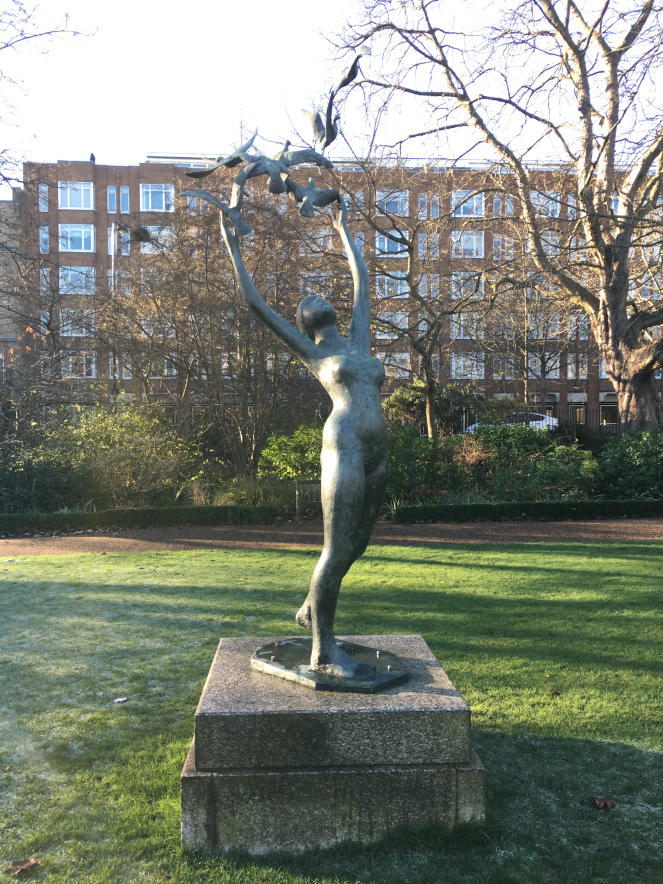

Sydenham Hill Wood and Dulwich Wood
My final hidden woodland gem can be found in South London, which I discovered in 2019 on my walk from Crystal Palace Park to Dulwich Wood. Sydenham Hill Wood and Dulwich Wood are located right next to one another. Together they’re the largest part of the old Great North Wood, which was an ancient landscape of woodland and wooded commons which once covered the high ground between Deptford and Selhurst.
With both of the woods adjacent to one another, I first visited Sydenham Hill Wood which is designated as a Local Nature Reserve and Site of Metropolitan Importance for Nature Conservation. In 1732 an oak-lined formal avenue, known as the Cox’s Walk, which leads from the junction of Dulwich Common and Lordship Lane was formed by Francis Cox. It connected his Green Man Tavern and Dulwich Wells with Sydenham Wells Park.

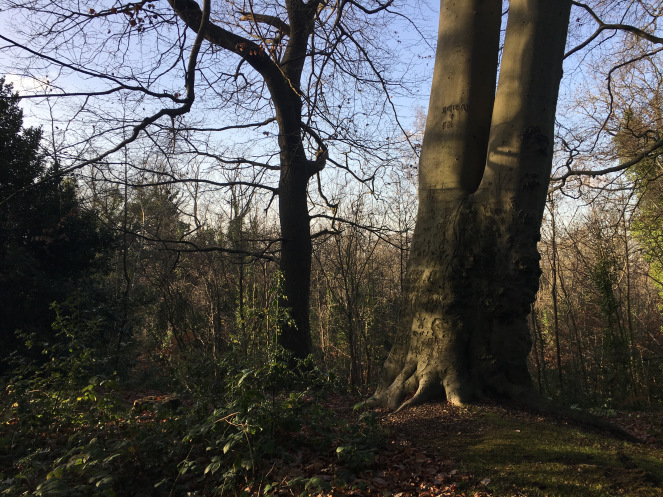
The old Nunhead to Crystal Palace railway once passed through the wood and you can tell where part of the line used to be, especially the footbridge which goes over the woods and used to have the tracks underneath it.


The woodland is home to more than 200 species of trees and plants, as well as rare fungi, butterflies, scarce bees, woodpeckers, wasps, stag beetles, other insects, hedgehogs, birds and woodland mammals.

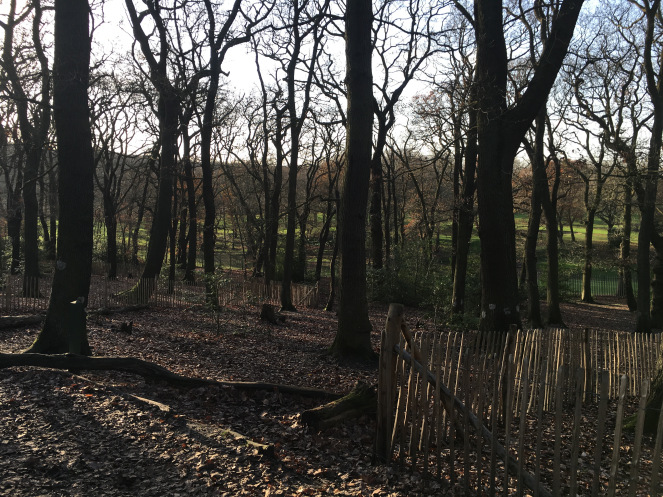

Right next to Sydenham Hill Wood is Dulwich Wood, which is privately owned by the Dulwich Estate. Back in the Middle Ages, the Manor of Dulwich belonged to Bermondsey Abbey having been given to the Abbey in 1127 by King Henry I. The Dulwich Estate was surveyed in 1542 after Henry VII dissolved the monasteries. The wealthy Edward Alleyn in 1605 bought the Manor of Dulwich from the Calton family who had owned it since the dissolving of the monasteries.



An unexpected treasure that you get to enjoy once you’ve left Dulwich Wood comes from of all places a golf club! The neighbouring Dulwich & Sydenham Hill Golf Club provides an awe-inspiring view of the London skyline, which provides a different panoramic perspective of the capital than from Stave Hill.
I’ve never played golf on a proper course, but if I ever did, I’d probably play here just for the views!
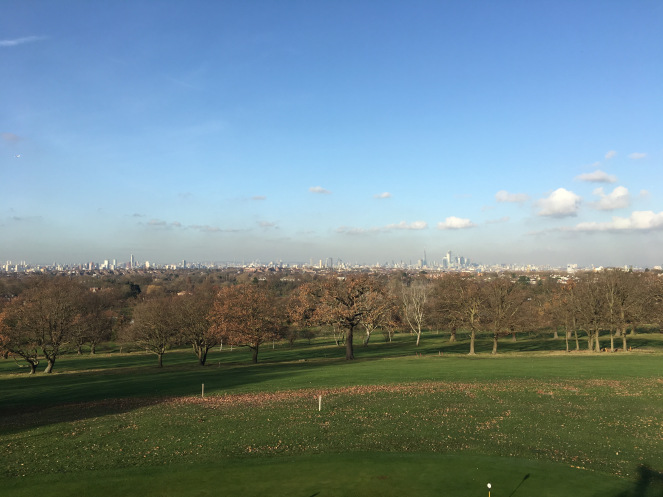



Kew Green
Readers of this blog will know that I’m an avid cricket player and fan, so this next hidden gem means a bit more than some of the others! In 2019 on my walk from Chiswick Bridge I concluded in the quintessentially British surroundings of Kew Green.
The 30 acre (12 hectare) triangular space has been a venue for cricket since the 1730s – with one of the earliest matches being played there between Kent and Brentford in June 1730. Kew Cricket Club was established in 1882 following the amalgamation of two local clubs – Kew Oxford Cricket Club and Kew Cambridge Cricket Club.
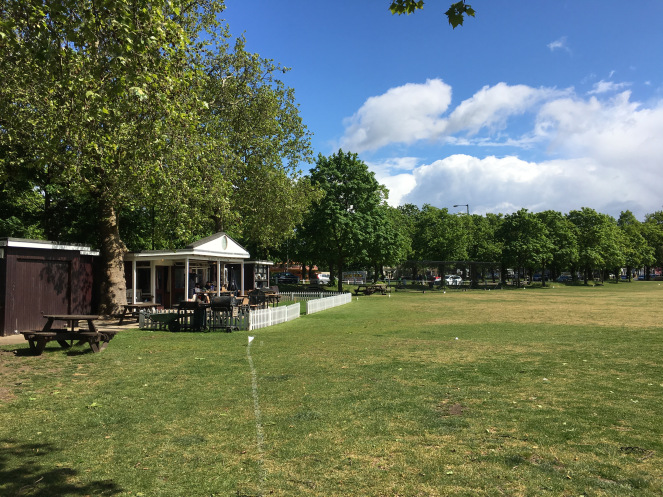
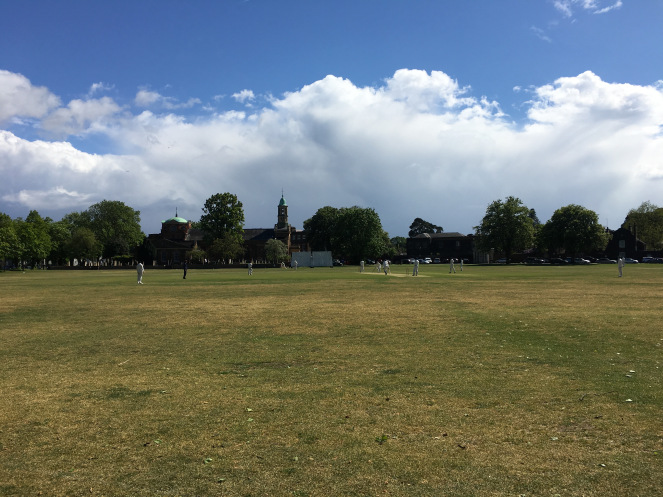
On the day I visited I was lucky enough to watch an actual cricket match, which was a friendly between Kew Cricket Club and Acton Cricket Club. When cricket is being played it’s so scenic and whenever you think of village cricket you certainly have this view in mind. It’s such a traditional British sight a game of cricket on a village green, something you’d see on a postcard.
I do love the sound of a willow bat on ball, very soothing and pleasant. The beautiful pavilion on one side with the St Anne’s Church on the south side makes it very reminiscent of Richmond Green. Unlike Richmond Green, I have actually played on this green back in 2014 for a work cricket day for a friend – so it’s one cricket ground I’ve ticked off my list!

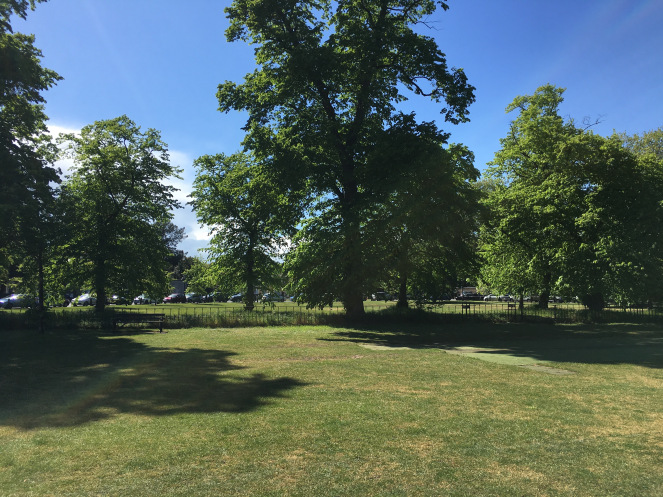
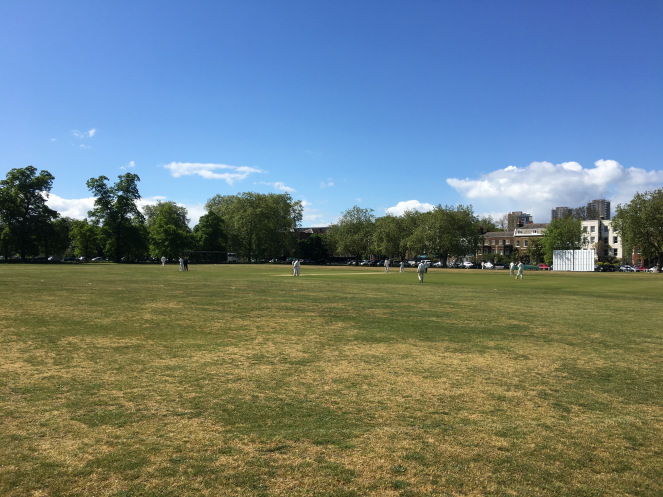
Kyoto Garden
My final hidden gem on my list is the mesmerising Kyoto Garden, which I explored back in 2017 on my walk from Holland Park to Meanwhile Gardens.
Located in Holland Park, Kyoto Garden opened in 1991. The garden was installed as part of the Japan Festival in 1991, which celebrated the centenary of the Japan Society in Britain. It was built by the Kyoto Chamber of Commerce and presented to the Royal Borough of Kensington & Chelsea as a gift to commemorate the long-lasting friendship between Great Britain and Japan.

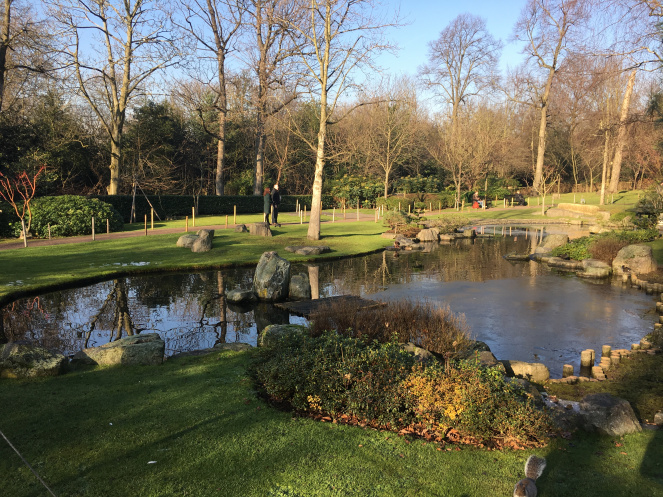

There aren’t too many places where you combine peacefulness and prettiness than a Japanese Garden. With stylish ornaments, delightful ponds and watery wonders, your relaxation levels reach new heights as you’re whisked away in splendour. This was the first but not the last Japanese Garden that I’ve explored having visited one on my trip to San Francisco in 2019.


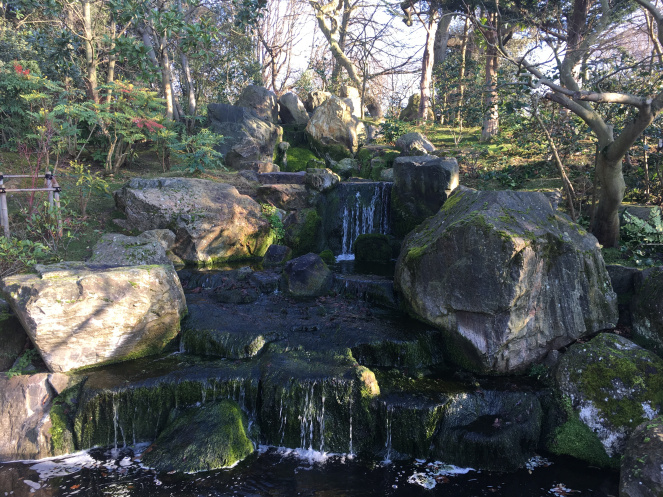



I hope you’ve enjoyed looking back at my favourite hidden gems in London, which have explored woodlands and greens to views and gardens! Please do share your favourite hidden gems in London in the comments section, I’d love to hear them.
Thanks for reading and in the meantime you can follow all my walks on Facebook, Twitter and Instagram, and don’t forget to sign up to my blog too so you don’t miss a post! Also why not have a read of my other walks which explore all over London, from north to south, to west to east via central, there’s something there for you – and you can also read my very special walk of San Francisco too!
Here are the links to all my walks:
King’s Cross to Hampstead Heath
Leadenhall Market to Old Spitalfields Market
St Paul’s Cathedral to Moorgate
Mile End Park to London Fields
Hyde Park Corner to Italian Gardens
Clapham Common to The Albert Bridge
Grosvenor Gardens to Knightsbridge
Holland Park to Meanwhile Gardens
Hackney Downs to Springfield Park
Ravenscourt Park to Wormwood Scrubs
Covent Garden to Southwark Bridge
Putney Bridge to Barnes Common
Westminster Abbey to Vauxhall Bridge
Crystal Palace Park to Dulwich Wood
Clapham Junction to Battersea Bridge
Norbury Park to Tooting Commons
Lesnes Abbey Woods to the Thames Barrier
Richmond Green to Wimbledon Common
Gladstone Park to Fryent Country Park
Whitehall to Piccadilly Circus
Tower of London to the Limehouse Basin
Ham Common to Hampton Court Bridge
The House Mill to Hackney Marshes
Twickenham Stadium to Crane Park Island
Arnos Park to Trent Country Park
Blackheath to Mudchute Park & Farm
The Bridges of London (Part one) – Tower Bridge to Vauxhall Bridge
The Bridges of London (Part two) – Grosvenor Railway Bridge to Kew Bridge
The Bridges of London (Part three) – Richmond Lock and Footbridge to Hampton Court Bridge
Sources:
All photos taken by London Wlogger © Copyright 2016-2020

Thank you for such an engrossing Post and for bringing to my attention the number of parks I didn’t know about in London. Set out as in your post, Londoners are indeed lucky to have so many acres of greenery to walk in and explore. I would love to have the opportunity to do so but alas, I no longer live in London and age prevents me from undertaking long walks. But I’ll follow you on your excursions, so thank you again.
LikeLiked by 2 people
Aww thank you so much for your lovely comments, I’m glad I could enlighten you on new places 😊 Hope you enjoy all my future and past posts and they can take you to those areas as if you were there 😃
LikeLike
Gems indeed
LikeLiked by 1 person
Which was your favourite? 😃
LikeLiked by 1 person
It’s a toss up between Hyde Park’s Italian Gardens and Barnes Common
LikeLiked by 1 person
and that’s all still in London? the view from Stave Hill looks amazing! what a gem
LikeLiked by 2 people
It sure is, Stave Hill isn’t too far from Canada Water!
LikeLiked by 1 person
It’s a toss up between Hyde Park’s Italian Gardens and Barnes Common
LikeLiked by 1 person
Great choices!
LikeLiked by 1 person
Thanks!
LikeLiked by 1 person
Such pretty, peaceful sounding parks, and right in London!? Great pictures and descriptions.
LikeLiked by 2 people
Thank you so much 😊
LikeLike
Wonderful. I lived/worked in and around London for years and don’t recognise most of these places. Though I always thought how lucky Londoners were, having so many parks and so much open space on their doorsteps.
LikeLiked by 1 person
Yeah Londoners have so many parks, woodlands, gardens and greens at their disposal, all with unique characteristics!
LikeLiked by 1 person
I enjoyed all the gardens and vistas you featured. What a rich heritage is there, right in London! Thank you for a delightful read.
LikeLiked by 3 people
Thank you so much Anne! You’re so right, every hidden gem has such charm and a story behind it 😊
LikeLike
So many fabulous images of fabulous parks. I would love Kyoto Gardens, but all are lovely. You’re fortunate to live there and be able to see all of this. Thanks for sharing with the rest of us who are dying to visit, but can’t!!!
LikeLiked by 2 people
Every time I walk through London it always surprises me! Hopefully you can come very soon and enjoy these walks 😃
LikeLiked by 2 people
Amazing work, Stu. How wonderful to have so much beauty so close at hand. I really enjoyed these.
LikeLiked by 2 people
Thank you so much 😊 It’s so amazing that all these places – which are so different in their beauty – are all in one city!
LikeLiked by 1 person
I so much love the sceneries. ❤
LikeLiked by 1 person
They’re truly stunning!
LikeLiked by 1 person
Yes. 😊
LikeLiked by 1 person
What a treat to have al these wonderful places nearby in a city.
LikeLiked by 1 person
We’re so lucky!
LikeLike
Great read – thank you for sharing – coincidentally, we walked through Shepherd Market yesterday after visiting the Royal Academy late summer exhibition – should have read your blog earlier as would have loved eating in your favourite Italian restaurant.
LikeLiked by 1 person
Oh lovely I’m glad you’ve been able to discover this hidden gem, something to visit when the pandemic is over 😊
LikeLike
Have just come across your wonderful ‘hidden gems’ & can’lt wait for the pandemic to quieter down so as to be able to get out & explore them.
You might enjoy Queens Wood which is actually opposite Highgate Wood. It is wilder than Highgate Wood.
Also delightful-the Hill Garden Hampstead located near Golders Hill Park.
LikeLiked by 1 person
Welcome aboard! That sounds like the ideal plan 😃 Perfect I’ll add those to my list, thank you 😊
LikeLike
Hi, I love this blog. London is on my travel bucket list and I’m glad I found you. The hidden gems are intriguing. Great post.
LikeLiked by 1 person
Welcome aboard, glad you’ve been able to find me and my blog! Hopefully you can visit London soon 😊
LikeLike